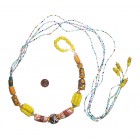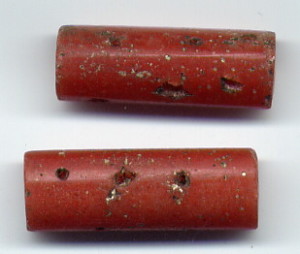African Waist Beads are commonly seen as a product of Ghana; an expression of femininity, a weight loss tool, and a means by which to capture the attention of potential suitors. It doesn’t surprise me the Yoruba of Nigeria are also waist bead enthusiasts. From their extravagant coral bead masks and headdresses, to their intricately beautiful bead embroidered sashes and belts, the Yoruba are among the most style conscious tribes in Africa.
The usage of waist beads is widespread among tribes in Nigeria, however, it is the Yoruba that appear to have developed them for the greatest variety of cultural and spiritual uses. Yoruban tribespeople believe that waist beads are extremely evocative, having the power to attract men, aid spirituality and health, and demonstrate the success and wealth of an individual. Waist beads are predominantly worn by Yoruban women, partly because they’re considered a symbol of feminism, yet also because it is believed they can prevent conception. It seems a contradiction of sorts that women also wear the glass “bebe” waist beads to rouse the desires of men.
Beads are a precious commodity to the Yoruba, which is probably why they have such a wide range of uses. While they are considered to be a tool of seduction, they are also used to emphasise a woman’s chastity or reservedness. Parents gift waist beads to their daughters when they come of age to communicate their purity to potential suitors. Married women on the other hand wear palm nut waist beads (known as “lagidigba”) with hanging discs to represent each successful birth – essentially showing off their fertility.
Other tribes in Nigeria also have some fascinating uses for waist beads. The Orisa, whom are strong believers in water spirits, wear waist beads as a protective amulet against spiritual attack from both the living and the dead. Women often hang charms from their waist bead bands to ward off the evil spirit “Akibu” (a mermaid), whom they believe may steal their fertility. Much like the Yoruba, the Ogoni also wear beads as a sign of wealth and status. Women are presented with strands of beads on their wedding day by their parents -often as a down-payment to her future husband!

Waist beads similar to those worn by Yoruban brides on their wedding day.
